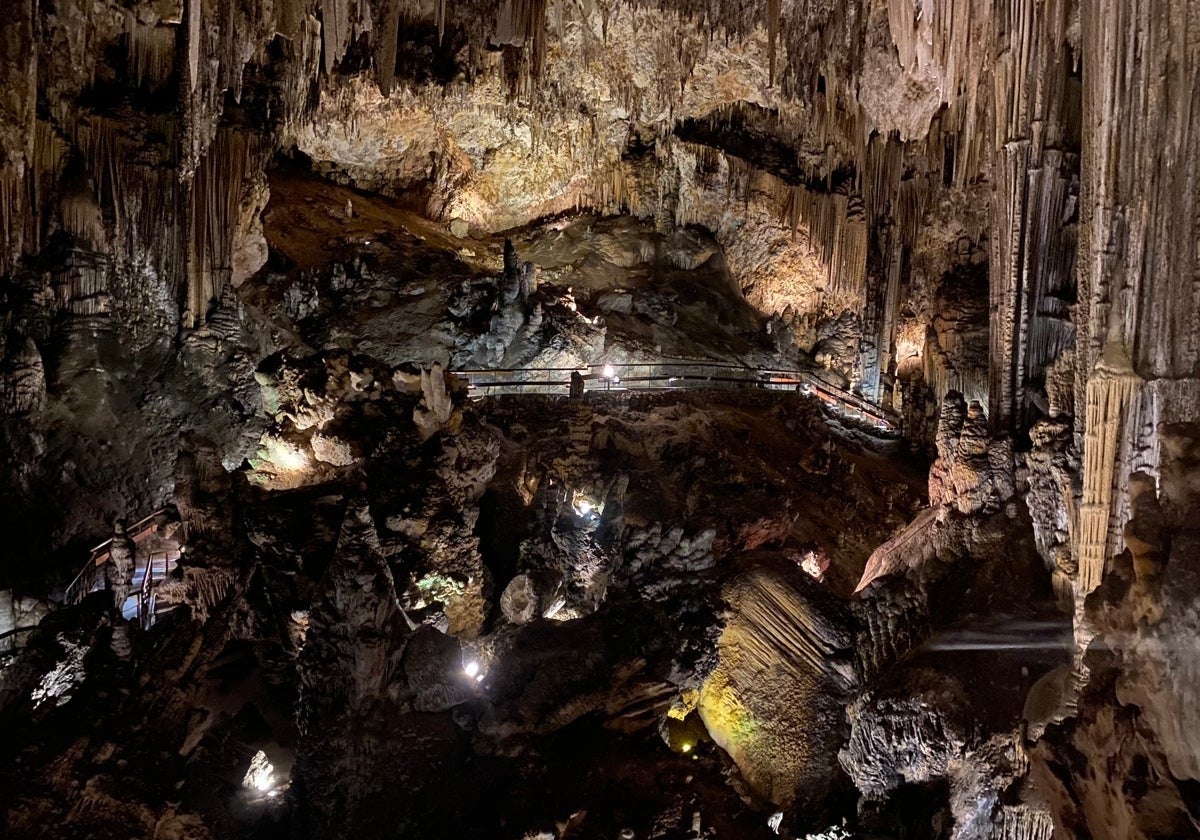Nerja cave joins bid to have Malaga's Palaeolithic caves recognised as World Heritage Sites
The town hall has agreed to join Antequera, Ardales, Benalmádena, Benaoján, Malaga city, Marbella and Rincón de la Victoria as joint provincial candidates for the Unesco list
Eugenio Cabezas
Nerja
Monday, 25 August 2025, 12:23
Nerja town hall on the eastern Costa del Sol has joined the bid to include Malaga province's Palaeolithic caves on the Unesco World Heritage Sites list. At its last meeting, the town hall adopted an institutional agreement to join Antequera, Ardales, Benalmádena, Benaoján, Malaga city, Marbella and Rincón de la Victoria.
Mayor of Nerja José Alberto Armijo said in a statement that "obtaining this important international recognition will contribute to reinforcing the historical and cultural value of our cave, promoting its conservation and strengthening its tourist and educational appeal". With this agreement, Nerja joins a joint candidacy that encompasses a total of twelve caves spread across eight municipalities in Malaga province, "with the aim of preserving and promoting this exceptional historical and cultural legacy".
Nerja cave was the symbolic setting for the presentation last June of the joint candidacy of the Malaga caves with Palaeolithic paintings that aspire to be included in Unesco's World Heritage list. The 12 caves are organised into two groups. On the one hand there are the large natural ones, which include the caves of Pileta, Ardales and Nerja and on the other hand, there are the medium-sized caves, which include Gato, Las Suertes, Toro/Calamorro, Pecho Redondo, Navarro IV (La Araña), Victoria, Higuerón/Tesoro, Gallinero and Doncella.
Outstanding universal value
The scientific and technical initiative has received political support from the eight local councils in the province where the caves are located and the backing of the central government representation in Malaga and the provincial body, the Diputación de Málaga.
In order to apply for inclusion on the Unesco World Heritage list, several requirements must be met, including certification of at least one Outstanding Universal Value (OUV). According to representatives of the Malaga caves, there are several in the case of the province and, furthermore, shared by different caves.
Malaga province's caves span a period from 65,000 years ago to 10,000 years ago, a time frame in which the caves of Malaga display classic iconography of animals and anthropomorphic representations with a wide repertoire of continental and marine fauna from the Gravettian to the Magdalenian periods. This wealth and variety has positioned it as a leading centre in the last decade of studies of the writings, symbols and marks that correspond to the earliest examples of human art.
The launch of the process marks the beginning of a long journey that will involve the inclusion of this initiative on the Tentative List of properties - a preliminary step for the nomination of the candidacy - compliance with exhaustive management and conservation parameters, and evaluation by Unesco advisory bodies such as the International Council on Monuments and Sites (Icomos) and the International Union for Conservation of Nature (IUCN).

Comentar es una ventaja exclusiva para registrados
¿Ya eres registrado?
Inicia sesiónNecesitas ser suscriptor para poder responder.
Necesitas ser suscriptor para poder votar.